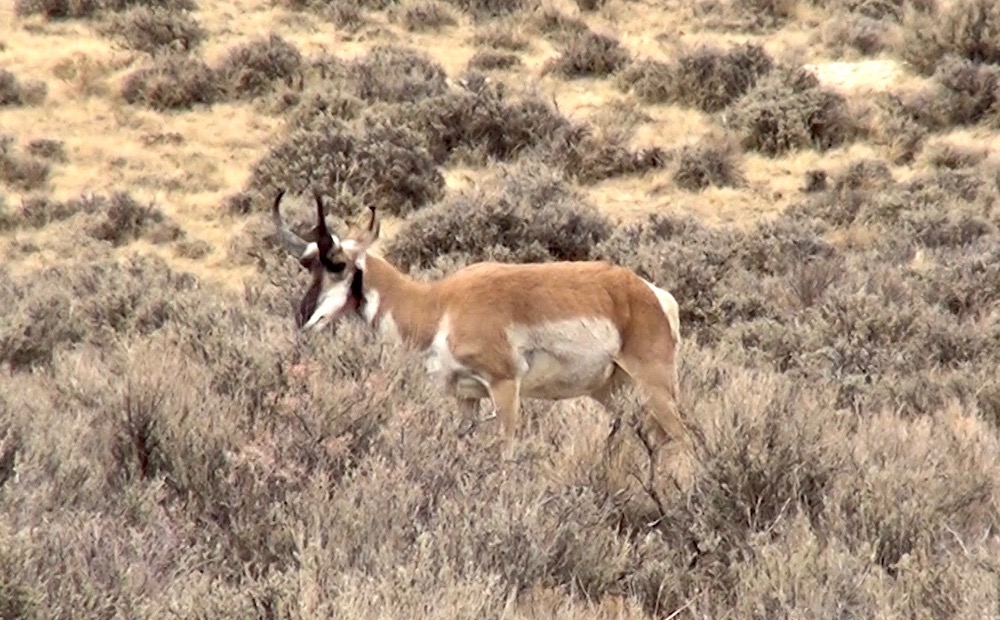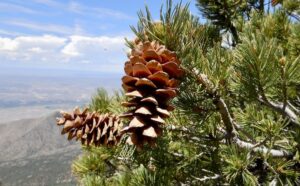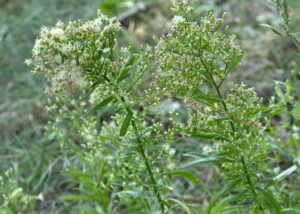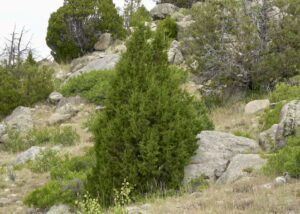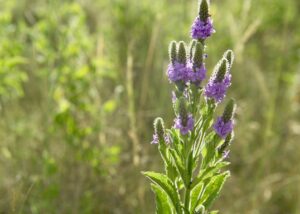Antelope
Anatomy and Natural History
Pronghorn antelope are also called speed goat, prong buck, or just antelope. This graceful speed demon of the sagebrush country is neither an antelope nor a goat. Yet its family name, Antilocapradae means goat-antilope. It resembles both goats and antelopes but actually predates both on the evolutionary timeline. Pronghorn are the fastest land mammal in North America. They can run steadily at 55 miles per hour for ½ mile but can run at a sustained speed of 35 mph until they disappear over the horizon. In the entire world, they are the second fastest land animal. The African cheetah is fastest but cannot run as far as the pronghorn at high speed. It is believed that the pronghorn became a “speed goat” as they are known in parts of Wyoming during their evolutionary development in the Miocene (20 million years ago) when the American cheetah (close relative of the African cheetah) would have given the young pronghorn a run for their money. Only the fastest survived. Today, they can outrun all their predators handily although unlike superman, they are NOT faster than a speeding bullet, and hundreds are hunted in Wyoming every year for their meat.
Horns are the most distinctive feature of pronghorn anatomy. They are used for dominance displays and ritualistic butting during the rut (mating season), and effectively used against predators such as coyotes and eagles. The horns are made of keratin (modified hair protein) which grows over permanent boney cores that are solid extensions of the top of the skull. Interestingly, the pronghorn is the only native horned animal in North America that sheds its horns and grows new ones every year. Horns are not the same as antler which are made entirely of bone tissue, and many members of the deer family (white tail, mule deer, moose, and elk) shed their antlers every year.
The horns of the pronghorn are very unlike the horns of the bovids (cattle, bison etc.) caprids (goats, mountain goats, musk ox, etc.) or the true antelope (gazelles, kudu, sables, etc.). The branched horn sheath is made of a fairly standard curved trunk but the pointing branch is shorter and curved upward with a fairly sharp tip, giving it the name ‘prong’ horn.
Pronghorn also differ from deer in that they have a gall bladder and deer do not. And unlike other ungulates, pronghorns lack dew claws which are vestigial (non-functional) toes that do not touch the ground.
Pronghorn bucks have scent glands on the sides of the head and can be seen marking their territory by rubbing their heads and horns on sagebrush or small trees. Since both males and females can have horns and both lose their horns in early winter, males are distinguished from females by a black patch of hair on both sides of the neck behind the jaw bone. Female horns are much smaller than males at 5-6 inches long (compare to males at 10-17 inches), and the females only rarely have a prong.
The scientific community first became aware of the pronghorn through the journals of Lewis and Clark who made notes on the strange new animal of the Great Plains in what is now South Dakota in 1804.
The pronghorn, more closely related to the mountain goat, is more gracile and streamlined in form and function than the members of the deer family. Weighing in at about 120 lbs. for a male and 90 to 100 lbs. for a female, these are the smallest ruminant ungulates in the U.S. Not only that, they are the only mature native ruminants still living in North America. Deer, elk, moose, and mountain goats arrived in North America from Asia prior to the last ice age. Of the 12 species of goat antelopes that were native to North America prior to the ice age, only the pronghorn survived to modern times (although there were five goat antelopes species around when Native Americans took up residence).
We have fossil evidence of the pronghorn in the early Miocene epoch. It first appeared in geologic time over 20 million years ago as a small (raccoon-sized) frugivorous (fruit-eating animal). Over time and due to competition with a rapidly radiating spectrum of mammal life in the world, the pronghorn became larger and more efficient. It developed an enlargement in its digestive system (rumen) before the stomach allowing it to slow down the passage time in the gut, and expose food to a bath of enzymes created by microorganisms. This vastly increased its range of digestible food sources. Fermenting food in the rumen allowed this pioneering mammal of the Miocene to digest weedy and even poisonous plants with less waste – using a greater range of habitats – including the hostile deserts and steppes of arid continental interiors. The idea caught on. The Ruminantia subfamily of mammals (the “ruminants”) radiated throughout the world to include the deer, antelopes, goats, mountain goats, cattle and bison of Europe, Africa, Asia and the Americas.
Pronghorn have an unusually raised set of eye sockets providing them with a 320-degree peripheral vision without having to turn the head. Combine that with a visual acuity equivalent to wearing a pair of 7x binoculars and very little escapes the attention of this species.
Ecology
Pronghorn are supremely adapted to harsh dry habitats, particularly scrub deserts and sagebrush steppes where grass and water can be scarce, often though they expand into the foothills and montane zones of Wyoming’s mountain ranges. The broad spectrum of their dietary preferences allows for survival in a wide variety of habitats as well as during times of drought and climate change. In some habitats, forbs (herbaceous plants – not grasses) make up more than 60% of the diet. In others, rabbitbrush makes up the bulk of the diet. In still others, cacti can be as much as 40%. On the eastern grasslands, much more grass is utilized.
Behavior
Males are generally territorial. Most females will prefer to play the role of “sampler female” who visits various males in their local territories. As estrus season gets closer to mid- September when breeding occurs, “inciting females” instigate battles between males. After days of head butting, chasing, horn displays etc., the females choose the winner.
Although sexually mature at 16 months, most bucks won’t breed until their 3rd or 4th year. Gestation is long: 235 days, well over a month longer than most ungulate wildlife. The does carry the fawn from September to May, similar to the human gestation period.
A newborn fawn weighs 6-7 lbs. and for the first 21-26 days spends almost all its time hidden under sagebrush, bitterbrush or tall grass. Fawns interact with their mother for suckling, grooming or following for less than 30 minutes a day. Mother pronghorn are notorious protectors, attacking coyotes, lions, even eagles that get too close.
Native American
Most tribes valued pronghorn for their rich meat and soft hide. However, some Crow elders have said it was not eaten much because of the strong taste.
The old Shoshone name for the valley in which Lander, Wyoming now lies is WONSA GADIT – “where the buck antelope sits”.

